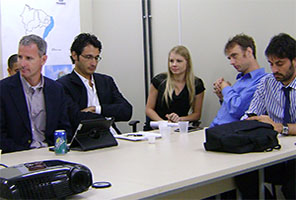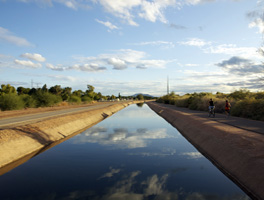By Ian Johnson via The New York Times
BEIJING — China is pushing ahead with a sweeping plan to move 250 million rural residents into newly constructed towns and cities over the next dozen years — a transformative event that could set off a new wave of growth or saddle the country with problems for generations to come.
The government, often by fiat, is replacing small rural homes with high-rises, paving over vast swaths of farmland and drastically altering the lives of rural dwellers. So large is the scale that the number of brand-new Chinese city dwellers will approach the total urban population of the United States — in a country already bursting with megacities.
This will decisively change the character of China, where the Communist Party insisted for decades that most peasants, even those working in cities, remain tied to their tiny plots of land to ensure political and economic stability. Now, the party has shifted priorities, mainly to find a new source of growth for a slowing economy that depends increasingly on a consuming class of city dwellers.
The shift is occurring so quickly, and the potential costs are so high, that some fear rural China is once again the site of radical social engineering. Over the past decades, the Communist Party has flip-flopped on peasants’ rights to use land: giving small plots to farm during 1950s land reform, collectivizing a few years later, restoring rights at the start of the reform era and now trying to obliterate small landholders.
Across China, bulldozers are leveling villages that date to long-ago dynasties. Towers now sprout skyward from dusty plains and verdant hillsides. New urban schools and hospitals offer modern services, but often at the expense of the torn-down temples and open-air theaters of the countryside.
“It’s a new world for us in the city,” said Tian Wei, 43, a former wheat farmer in the northern province of Hebei, who now works as a night watchman at a factory. “All my life I’ve worked with my hands in the fields; do I have the educational level to keep up with the city people?”
China has long been home to both some of the world’s tiniest villages and its most congested, polluted examples of urban sprawl. The ultimate goal of the government’s modernization plan is to fully integrate 70 percent of the country’s population, or roughly 900 million people, into city living by 2025. Currently, only half that number are.
The building frenzy is on display in places like Liaocheng, which grew up as an entrepôt for local wheat farmers in the North China Plain. It is now ringed by scores of 20-story towers housing now-landless farmers who have been thrust into city life. Many are giddy at their new lives — they received the apartments free, plus tens of thousands of dollars for their land — but others are uncertain about what they will do when the money runs out.
Aggressive state spending is planned on new roads, hospitals, schools, community centers — which could cost upward of $600 billion a year, according to economists’ estimates. In addition, vast sums will be needed to pay for the education, health care and pensions of the ex-farmers.
While the economic fortunes of many have improved in the mass move to cities, unemployment and other social woes have also followed the enormous dislocation. Some young people feel lucky to have jobs that pay survival wages of about $150 a month; others wile away their days in pool halls and video-game arcades.
Top-down efforts to quickly transform entire societies have often come to grief, and urbanization has already proven one of the most wrenching changes in China’s 35 years of economic transition. Land disputes account for thousands of protests each year, including dozens of cases in recent years in which people have set themselves aflame rather than relocate.
Continue reading at The New York Times.


 On June 10, 2013, Dave White, DCDC co-director and Senior Sustainability Scientist with the Global Institute of Sustainability and an ASU contingent, had the unique opportunity to travel to Tec de Monterrey in Monterrey, Mexico to participate in an exchange program focused on sustainability education.
On June 10, 2013, Dave White, DCDC co-director and Senior Sustainability Scientist with the Global Institute of Sustainability and an ASU contingent, had the unique opportunity to travel to Tec de Monterrey in Monterrey, Mexico to participate in an exchange program focused on sustainability education.